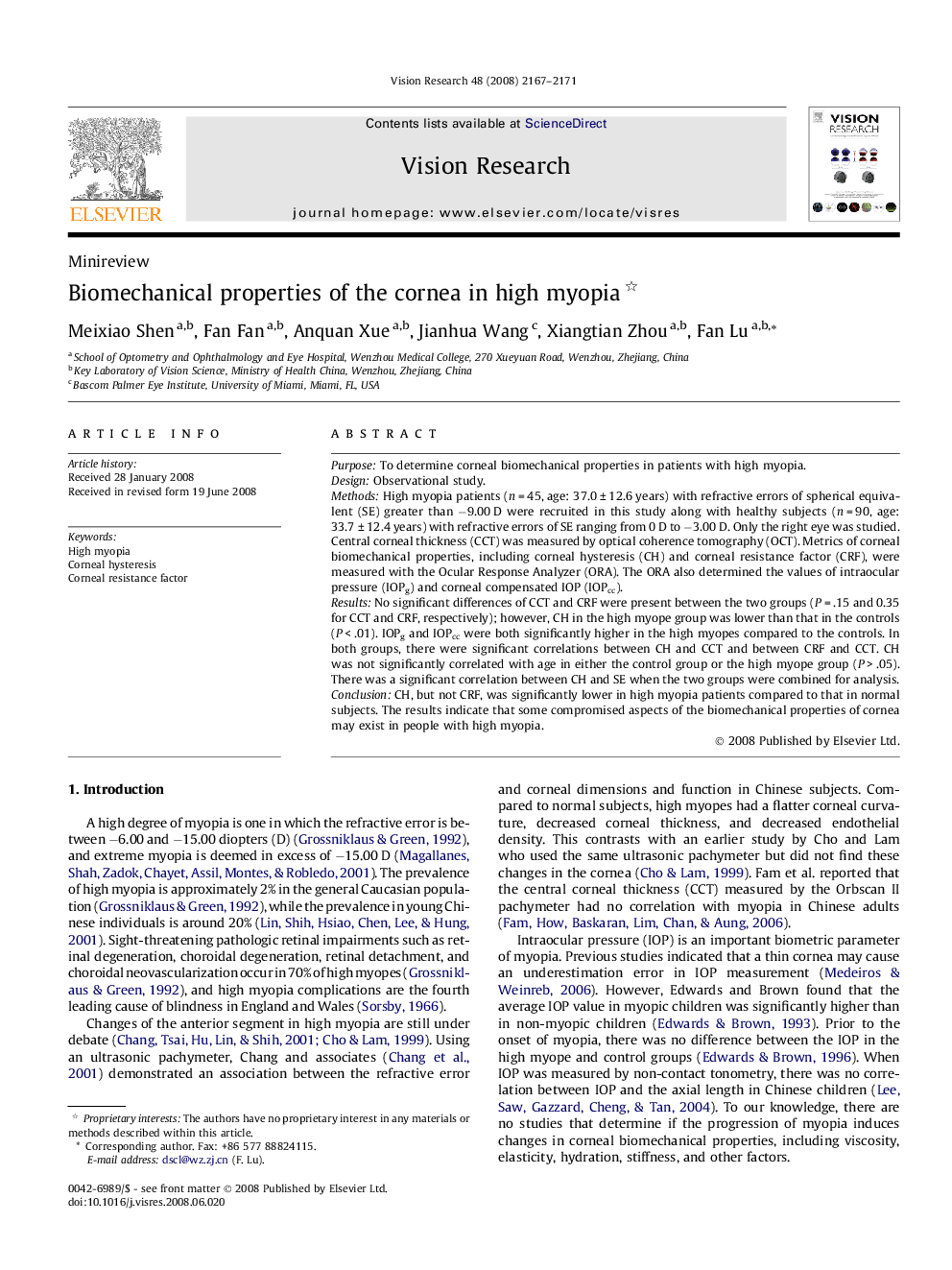| Article ID | Journal | Published Year | Pages | File Type |
|---|---|---|---|---|
| 4035550 | Vision Research | 2008 | 5 Pages |
PurposeTo determine corneal biomechanical properties in patients with high myopia.DesignObservational study.MethodsHigh myopia patients (n = 45, age: 37.0 ± 12.6 years) with refractive errors of spherical equivalent (SE) greater than −9.00 D were recruited in this study along with healthy subjects (n = 90, age: 33.7 ± 12.4 years) with refractive errors of SE ranging from 0 D to −3.00 D. Only the right eye was studied. Central corneal thickness (CCT) was measured by optical coherence tomography (OCT). Metrics of corneal biomechanical properties, including corneal hysteresis (CH) and corneal resistance factor (CRF), were measured with the Ocular Response Analyzer (ORA). The ORA also determined the values of intraocular pressure (IOPg) and corneal compensated IOP (IOPcc).ResultsNo significant differences of CCT and CRF were present between the two groups (P = .15 and 0.35 for CCT and CRF, respectively); however, CH in the high myope group was lower than that in the controls (P < .01). IOPg and IOPcc were both significantly higher in the high myopes compared to the controls. In both groups, there were significant correlations between CH and CCT and between CRF and CCT. CH was not significantly correlated with age in either the control group or the high myope group (P > .05). There was a significant correlation between CH and SE when the two groups were combined for analysis.ConclusionCH, but not CRF, was significantly lower in high myopia patients compared to that in normal subjects. The results indicate that some compromised aspects of the biomechanical properties of cornea may exist in people with high myopia.
